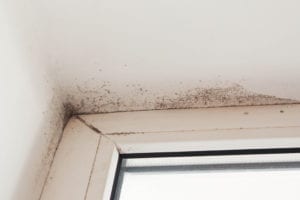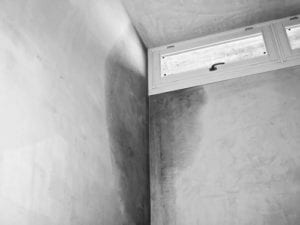Moisture control
Dampness is a silent killer. Moisture problems in the home often cause an unpleasant smell and are dangerous for your health. This can cause respiratory problems and develop allergies. In the worst case, you may even develop mould that can make you deathly ill. You will find more information on tackling your damp problems on this page. You will find the costs of moisture control and the types. You will also find out how a specialist works and what you can do to combat dampness.
Moisture control costs
The cost of moisture control varies greatly. In the table below, you will find more explanation of the control method and the average cost for each type.
| Type of damp control | Additional information | Additional information From price, including VAT and materials |
|---|---|---|
| Moisture damp (technique: injecting) | Moisture dampness is absorbed into the wall via cracks, crevices and poor jointing. The correct control method is injecting. Injection involves injecting a damp-proofing substance into your wall under high pressure. | £100 per metre |
| Moisture damp (technique: impregnation) | The correct method of control is impregnation. With impregnation, the outer wall has a moisture-resistant layer preventing moisture from migrating inside. | £10 per m2 |
| Moisture in the basement (technique: basement sealing) | One of the dampest places in your home is the basement. Have your basement sealed. In most cases, this is done by applying several layers of cement to the basement walls. | £ 125 per m2 |
Find the best specialist for your project and get free quotes.
Start

Types of moisture control
There are several ways to control moisture in and around your home. The 3 most common forms are listed below.
Extractive damp
When ground moisture is absorbed by your walls, you are dealing with rising dampness. A nasty moisture problem at ground level. The right way to deal with this is to inject a damp-proofing substance into your wall under high pressure. There are 3 possible ways:
| Get your walls injected | 1. Have the inner wall injected (8 linear metres)
2. Interior and exterior cavity wall injection (8 linear metres) 3. Repairing and injecting a wall (8 linear metres) |
1. £800
2. £1,500 3. £2,200 |
| Your house is lifted, so to speak. Plastic damp proofing is installed in the freed-up space. | £100 – £150 per running metre | |
| A care brick damp proofing | Freely new damp proofing method. This moisture control ensures a natural evaporation process. | £115 per running metre |
Dampness
This dampness problem occurs when your walls are porous, allowing them to absorb precipitation. This moisture lingers in your walls and thus penetrates your home. Moisture control of walls as a result of bad weather conditions can be carried out in the following ways:
| Type of moisture control | Description | Around prices, including VAT and materials |
|---|---|---|
| Get your walls impregnated | A protective coating is applied to your walls. The impregnating agent is also dirt-repellent.
1. External wall impregnation (100 m2) 2. Cleaning and impregnating a facade (100 m2) 3. Grouting, cleaning and impregnating a facade (100 m2) |
1. £ 900
2. £ 1,700 3. £ 3,000 |
| Treating with damp-proof paint | Special paints protect your walls against wetness. | £ 20 – £ 40 per m2 |
| New cladding | Give your facade a facelift with waterproof cladding. | £40 per m2 |
Basement moisture problem
The basement or crawl space is often the dampest place in your home. Get your cellar sealed to tackle a major source of dampness.
| Caulking your basement. | The most thorough solution to your damp basement. Your floor and walls are treated with a waterproof cement layer. | £2,500 – £7,500. This price depends heavily on the size of your basement. |
| Cellar drainage | Sometimes the water pressure is so great that waterproofing does not work. Basement drainage allows you to drain the wetness efficiently. It is like a drainage system. | £2,500 – £10,000 or more euros. |

Is it really time for moisture control?
Moisture problems arise in a variety of ways. It is important to recognise your damp problems quickly and have them addressed. Check the list below to find out if you have damp problems.
What do I recognise as a damp problem?
10 characteristics of damp problems:
- Battached windows
- Mould in the house
- A musty smell in the room
- Pests, such as silverfish or woodlice
- Rotting woodwork
- Salt rash or wall salts
- Moist interior walls
- Damp paint
How do I prevent dampness problems?
A common problem with damp-proofing is how to tackle it. People often only combat the symptoms because it is easier. Unfortunately, the cause of the problem then remains and so you stay busy. So prevention is better than cure. So here are a few tips to prevent damp problems:
- Keep your house ventilated.
- Dry your laundry outside, which will also save energy.
- Make sure everything is dry after a cleaning session (especially walls).
- Contain water vapour when cooking by putting lids on pots and pans.
- Leave the cooker hood on after cooking or open a window.
- Ventilise especially well after showering.
Out-source damp-proofing
Are you still undecided about hiring an experienced specialist or doing it yourself? Both options have advantages and disadvantages. We recommend you enlist the help of experts with experience.
Injecting your walls is precise work that requires a lot of experience. The same goes for impregnating your walls and treating your basement. You only want to do these projects if you have the skills.
Do you qualify for a damp proofing subsidy?
Wise, find out about the relevant subsidies and you’ll save a lot of money.
- SEEW subsidy (Home Energy Saving Subsidy)
You are entitled to a subsidy if you control your damp and take insulating measures simultaneously. This subsidy is the SEEW subsidy. Subsidy Energy Saving Own Home. You must take two or more energy-saving (insulation) measures simultaneously for this subsidy. The central government gives you a subsidy worth £200 to £1,200.
- Seek advice
In addition, you will receive a grant of £150 if you seek advice from an insulation specialist.
- Save on VAT
The VAT rate you must pay your specialist is a low rate, worth 6 per cent. The government has reduced this rate from 19 per cent to 6 per cent to encourage people to use the services of specialists. So too, with moisture control specialists.
- Find the cause of your moisture problems.
Get to the root cause of excess moisture in your home. Are these damp problems caused by your own actions or those of others? If these problems were caused by the actions of others, you are eligible for fire insurance.
- A fire insurance
You will receive this if you have damp problems caused by others. Think of leakage. A burst pipe ended up causing mould. Ask your insurer if you are eligible for fire insurance; not every insurance company will give you fire insurance.
Compare damp-proofers with these tips.
Have you ever found out after a purchase that you paid too much? Find the best damp proofing specialist by requesting damp proofing quotes. Checking a few things in advance before hiring a specialist is useful. Take note of the following:
- Check the cost – The humidity control costs fluctuate quite a bit. These are made up of material costs and hourly wages.
- Check the warranty terms – It is important to check how long you have a warranty on your damp proofing. On average, this is around 10 years. The last thing you want is to pay again for new damp problems.
- Kwantum discount – When several damp control projects are carried out simultaneously, you save money. Who knows, your neighbours may be suffering from the same damp problems.
- Check out the specialist’s quality marks and reviews –A quality mark tells you more about the specialist’s guarantees and working methods; for example, KOMO: This quality mark focuses on the quality assurance of products and services in the construction sector. KOMO ensures that a product or service meets certain quality requirements.
Do you want to know if you can trust the specialist with your project? Check reviews, if possible.
Find the best specialist for your project and receive free quotations.
Start